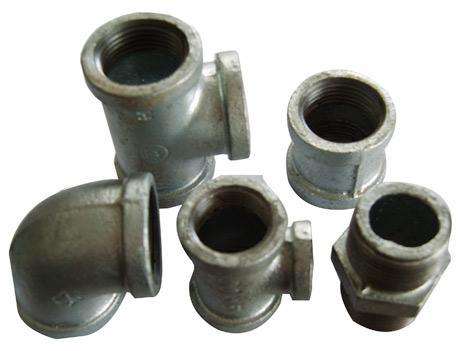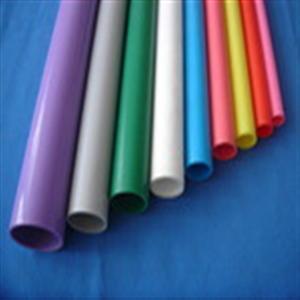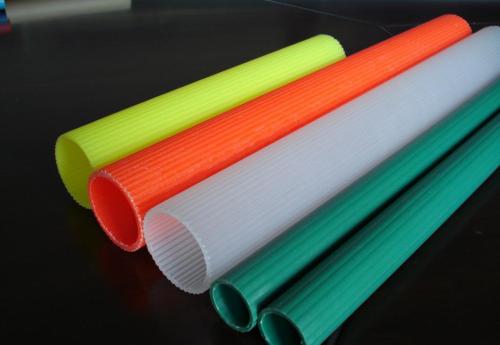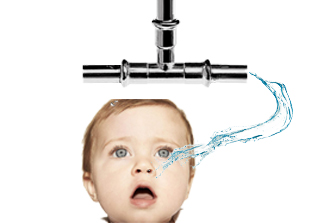Call:
0577-85859117
With the development of human life, people is considering healthy water more and more important. So the pipes to carry the water is higher required.

In old time, malleable casting iron thread pipe fittings and plastic pipefitting are popularly used. While there are bad results of both two types.


Such as malleable casting iron fitting, it is connected by threads which is also easily resulting bad connection leading to water leakage and so needing huge human maintenance cost.
For plastic pipes, there are two studies: one European and one American, water coming from certain plastic pipes was tested. Potentially hazardous substances were found, especially when the pipes were still new. These are highly dangerous silanes and other compounds that bind to the chlorine used for normal disinfection.
The first study we refer to was published in 2011 in the "Journal of Water and Health".
"Long-term study of migration of volatile organic compounds from cross-linked polyethylene (PEX) pipes and effects on drinking water quality”.
|
The purpose of the study was to investigate the migration of certain volatile organic compounds from PEX pipes produced with different methods, into the water we drink every day. Here are two of the substances that are potentially hazardous to health found in the water: • 2,4-di-tert-butyl phenol; • methyl tert-butyl ether (MTBE). The table below lists all the harmful substances and the possible risks to human health. |

The second and more recent study (2016) was published in the United States by the "AMERICAN WATER WORKS ASSOCIATION": "PEX and PP Water Pipes: Assimilable Carbon, Chemicals, and Odors".
|
Eleven brands of plastic pipes found on the market, including polypropylene (PP) and reticulated polyethylene (PEX) were analysed.
Three PEX pipes exceeded the established daily threshold of AOC (assimilable organic carbon): a unit of measure directly proportional to the quantity of biofilm that is deposited in the pipes.
Biofilm is the organic material responsible for the growth of bacteria. |
Thanks to many studies, we now know that plastic pipes (compared to copper and stainless steel) are the most inclined to the growth and proliferation of bacteria, such as legionella.
Plus, volatile and semi-volatile organic compounds were found. Some very hazardous substances, MTBE and ETBE were identified as the culprits of the spread of certain unpleasant odours in the water that comes out of these pipes.
The following table contains some of the most hazardous substances found in water coming from the pipes in the two studies.
|
Harmful chemical substances found in the water transported inside plastic pipes |
||
|
Chemical substance |
Type |
Damage to health |
|
Ethyl tert-butyl-ether (ETBE) |
Chemical compound related to the PEX reticulation process |
Excessive exposure can cause coughing, shortness of breath, dizziness, depression of the central nervous system, intoxication, and collapse. It may irritate the eyes and skin. |
|
Cyclohexane |
Solvent |
Irritation of the eyes, unconsciousness, damage to the nervous system, headaches, tremors, convulsions. |
|
Toluene |
Solvent |
Affects the central nervous system, eyes, skin, respiratory system, liver, and kidneys. It has been demonstrated that breathing in high levels of toluene during pregnancy can lead to the birth of babies with delays in growth and mental abilities. Exposure to toluene is associated with miscarriage. |
|
p-xylene |
Solvent |
Long-term exposure can lead to headaches, irritability, depression, insomnia, extreme fatigue, tremors, difficulty concentrating, and short-term memory lapses. |
|
Pyridine |
Solvent |
Affects the liver, with neurological effects, leads to kidney damage and irritation of the skin and eyes. |
|
1,1,1,2-Tetrachloroethane |
Solvent |
Short-term: drowsiness, dizziness, nausea, and vomiting. |
|
Methyl trichloroacetate |
Reagent |
Irritation to the skin and eyes, blackouts, visual disturbances. |
|
Pentadecane |
Solvent |
Irritation to the skin and eyes. |
|
2,4-Di-tert-butylphenol |
Anti-oxidant |
Causes serious eye irritation and skin irritation. |
|
Hexadecane |
Solvent |
Irritant to the eyes and skin, toxic if ingested in large quantities. |
|
Heptadecane |
Solvent |
Irritant to the eyes and skin, toxic if ingested in large quantities. |
|
7,9-Di-tert-butyl-1-oxaspiro-(4,5)-deca-6,9-diene-2,8-dione |
Anti-oxidant |
The human body can mistake it for oestrogen. In this manner, it can lead to the formation of certain types of cancer. |
|
Methyl (3,5-di-tert-butyl-4-hydroxyphenyl)propanoate |
Anti-oxidant |
Respiratory illnesses, pneumoconiosis. |
|
Bis(2-ethylhexyl) hexanedioate |
Plastifying agent |
No data available regarding humans. There is some evidence of carcinogenicity in animals. |
|
4-Octyl-N-(4-octylphenyl)-benzenamine |
Anti-oxidant |
No known effects to man |
|
Triethyl citrate |
Plastifying agent |
No known effects to man |
|
Butyl-2-methoxyethyl-phthalate |
Plastifying agent |
This is a phthalate: |
|
Androst-5,16-diene-3.beta-ol |
Steroid hormone |
Affects a person’s mood. |
|
p-cresol |
Chemical intermediary |
Acts at the level of the nervous system, irritating to skin and mucous membranes, possible carcinogen. |
|
1,3-Di-tert-butylbenzene |
Provable by-product of ionizing radiation |
No data available yet. |
Coweth hereby appeal to whole world people to use stainless steel press pipes instead of malleable/plastic tubes, for the health of next generation.
